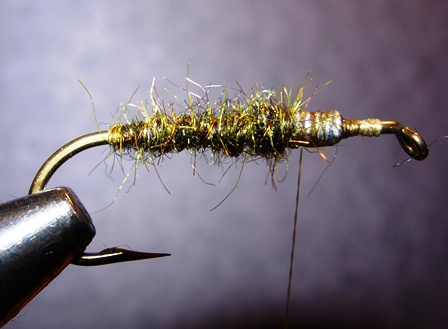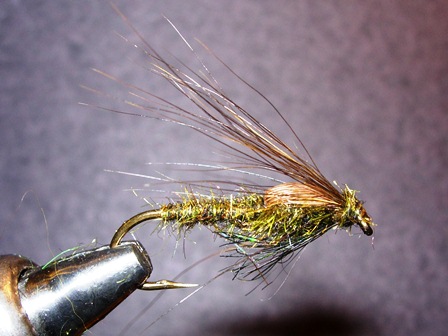Description
A few years ago, when I went to Labrador
with a small group of friends to fish for
giant Brookies, we expected that there would
be a good hatch of Hexagenia mayflies—and,
as it turned out, that was the case. What we
didn’t know were two big factors: (1) The
Hexagenias in Labrador are even larger than
they are in our neck of the woods; and (2)
There was a simultaneous hatch of Gray
Drakes and Green Drakes—and each of these
two additional species was the same size as
the Hexagenias. In other words, as it
happened there were three distinctly
differently colored ginormous mayflies
blanketing the water. Nevertheless, it
didn’t matter much because the fish gulped
down all three species indiscriminately. My
guess is that they do so because they are
all a nice big meal, and their season of
plenty is so short-lived that they eat
whatever is available. Their watery home is
frozen over for nearly 8 months, so as the
lawyers say, “time is of the essence” for
them.
Being contrarian by nature, I decided to
see what would happen if I used the Hex
nymphs that I had tied for the trip. The
guides thought I was a brick or two
short—and maybe they are right. But they
stopped their prattling when they began
seeing the results. Of course, once I had
made my point I returned to the adults—as we
all know, it just doesn’t get any better
than watching a big fish crash into your
floating fly. More recently, on a trip to
Henderson Springs for the annual Hex hatch
at that venue, my theory about what big fish
do during a Hex hatch proved itself time and
again. My theory is quite simple: If you see
fish swirling amidst a horde of adults
adorning the surface of the lake, don’t
assume that they are taking the adults. In
fact, at times they may not take the adults
at all, opting instead to intercept the
nymphs near the surface before they hatch.
Instead of putting on my favorite Hex adult
patterns, I set my rig up with a two-fly
tandem arrangement: the top fly was my
Swimming Hex Nymph, and the bottom fly was
Lincoln Gray’s Floating Nymph. My friend
Keith Pierraz stood and watched as I landed
17 fish (all between 18 and 24”) in an hour;
after Keith left, I stayed for another hour
and landed 10 more beauties. I would have
kept at it but it was black dark and I had
to get off the water. During that whole
two-plus hours, I did not see a single fish
take an adult. Go figure—but also give it
some thought. I’ve watched countless times
as anglers dig out their dry flies as soon
as adult mayflies appear on the water. Big
mistake. Stay with those nymphs until it is
clear that most of the fish are taking
adults. I will sometimes fish the nymphs or
swing
soft hackle right through the hatch.
Only when I’m sure—and I’m never sure of
anything, really—that the fish are done with
the nymphs will I switch to dries.
Tying Instructions
|
|
1.
Smash the hook barb. Wrap 3 turns of
weight at the thorax area, which
will be about 2 eye-widths behind
the hook eye.
2.
Cover the shank with thread, leaving
it at the back of the barb.
3.
Tie in a piece of fine gold or
copper wire.
4.
Dub a relatively slender abdomen of
Arizona Peacock dubbing; stop at the
one third point on the hook shank
behind the eye. Rib the abdomen with
the wire and tie it off in front of
the abdomen.
|
 |
|
|
|
5.
Cut a small bunch of brown deer
hair, clean it, and tie it in by the
tips in front of the abdomen with
the butts pointing to the rear.
Leave it in this position for now.
6.
Dub a robust thorax of Arizona
Peacock dubbing.
7.
Pull the wing case over the top of
the thorax, tie it down in front of
the thorax, and trim the excess.
|
 |
|
|
|
|
8.
Turn the fly upside down and tie in
a beard of pearl Lite-Brite; this
should be very sparse, and no longer
than the hook point.
9.
Return the fly to upright position,
tie in a brownish spey hackle, and
take a few wraps in front of the
thorax; tie it off and trim the
excess
|
 |
|
|
|
|
|
Crank
out
a bunch of these blokes, go
feed them to some trout, and…
 |
|
